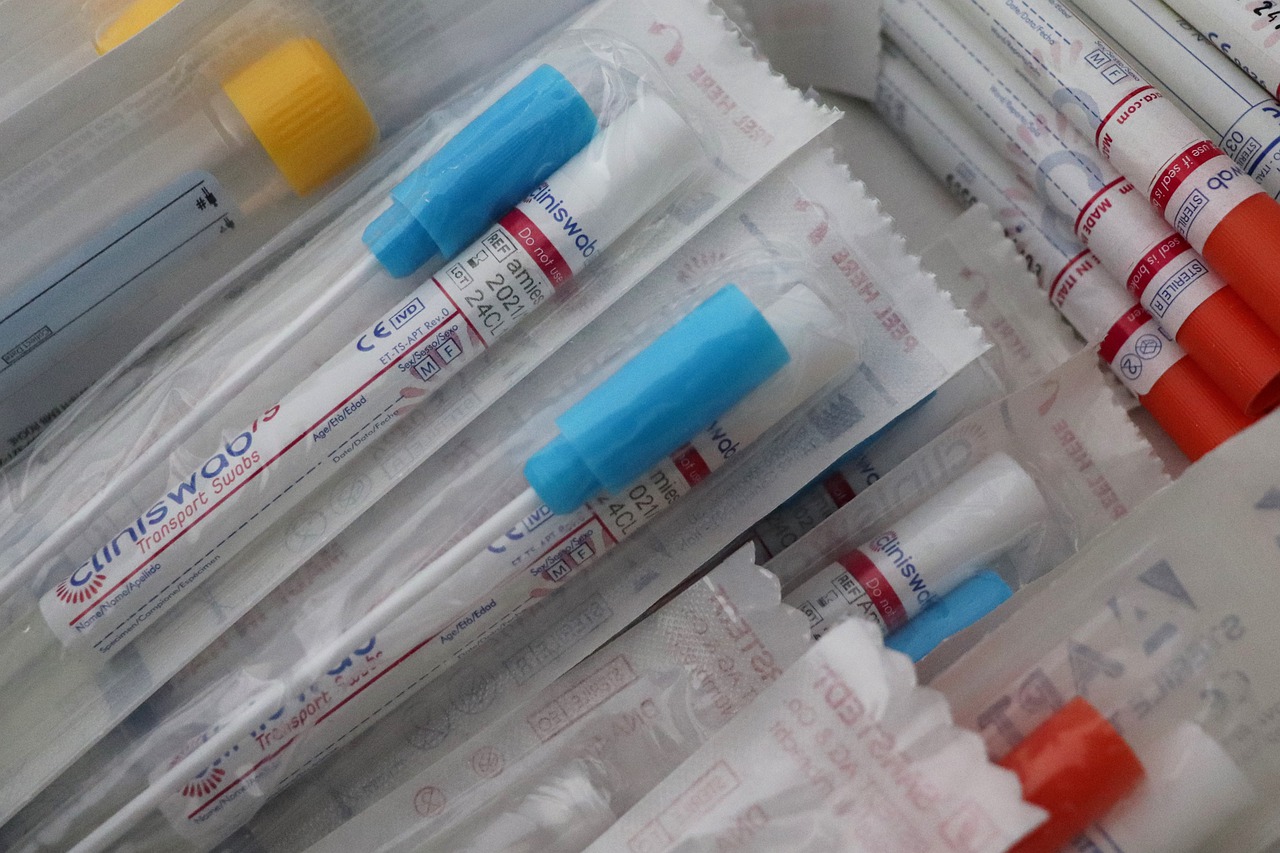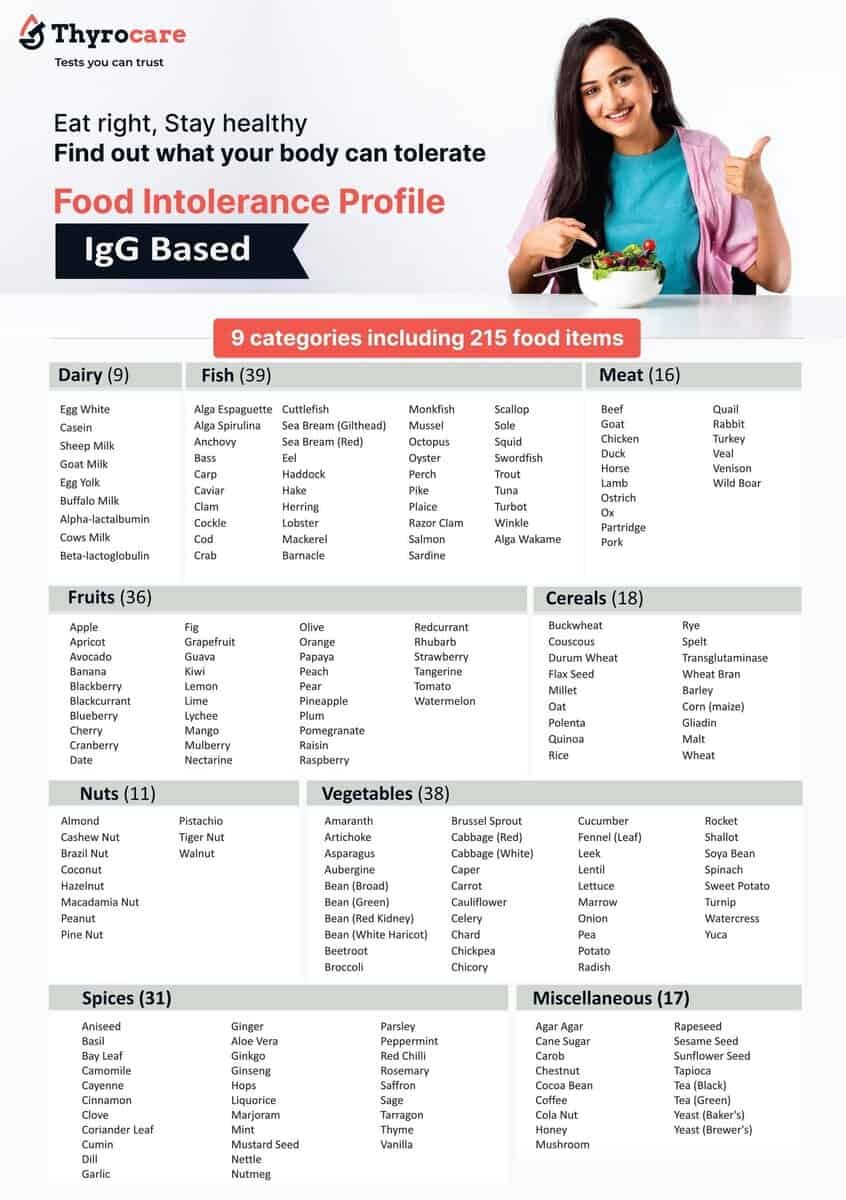What is a Paleo Profile in Medical Diagnosis?
The Paleo profile is a comprehensive package of profiles that helps to diagnose most of the lifestyle diseases caused mainly by sedimentary diet habits. A paleo profile can have different combinations of blood tests depending on the package size. Depending upon the number of parameters, the paleo profiles can be divided into two, as follows:
- Basic Paleo Profile
- Advanced Paleo Profile
Why should I Go for the Paleo Profile Tests?
Doctors recommend paleo profile tests for several reasons:
- Normally people having symptoms of disorders of the kidneys, lungs, heart, liver, etc., need to go through paleo profile tests.
- For those who have already started the paleo diet, a paleo profile can help in screening the health conditions improve.
- Doctors generally suggest paleo profile tests for the patients having overweight. The test parameters in this profile can help diagnose the reason for excel weight gain.
What are the preparations required for the Paleo Profile tests?
For a series of paleo profile tests, fasting over a period of 10 to 12 hours is a prerequisite. During this period you should take nothing else except water. The test report might inaccurate if you take anything else within this period. It’s recommended that you should give a blood sample in the morning before breakfast so that fasting will not an uncomfortable issue for you.
You should also consult your doctor about your medication and undergoing treatments. Some medicine may affect the test result. As per the suggestion of your doctor, you should either continue as usual or stop the certain medication. Please note that doctor’s advice is most important.
What is the procedure for the Paleo Profile?

The blood test for the Paleo profile is done by collecting a sample of blood. The procedure of the collection and storage of blood is called venipuncture. Venipuncture is carried out with the process which is elaborated in the steps below:
-A tight elastic band or a tourniquet is tied or wrapped around the upper arm of an individual. As the veins become more prominent, a needle or syringe is used for the collection of blood from the veins.
– The blood is drawn and collected into the tube of the syringe. The tourniquet is removed or unwrapped. An antiseptic is applied in the area around the puncture. Cleaning the area with an antiseptic helps in the further prevention of the infections.
– The spot of the puncture is dabbed with a cotton swab and a bandage is applied to it. This prevents any further bleeding. The collected sample of the blood is then sent to the laboratories for the paleo profile tests which are conducted on the blood.
For the urine test to be conducted, a sample of the urine has to be collected. The sample of the urine is collected over a period of 24 hours. The guidelines for the storage will be provided to you by the laboratory or the diagnostic center. The urine collection is done by the following steps:
– You will be given a container by the laboratory or the diagnostic center itself. Right in the morning, you have to clear your bladder by urinating. For the next 24 hours, you have to collect all the urine passed into the container which has been provided.
– The collected urine is then stored in a cool environment like in a refrigerator. Then the sample is sent for the Paleo Profile tests which are conducted on the urine.
What is the price of the Paleo Profile test in India?
The average cost of Basic Paleo Profile Tests is around Rs 2800. Advanced Paleo Profile Tests will cost between Rs. 4,000 and 6,000.
How much Time it Takes to Get Paleo Profile Test Results
Normally, you will get your test results within 24 to 48 hours of sample collection. In some cases, you can get the result before 48 hours.
What are the Tests Included in a Paleo Profile?
Paleo Profile is a Package of Profiles (POP) having different profiles in the package. Each profile consists a number of test parameters.
Profiles and parameters in a complete or advanced paleo profile are as follows:
Cardiac Risk Markers Tests (6 Parameters)
- Apo B / Apo A1 Ratio (Apo B/A1)
- Apolipoprotein – A1 (Apo-A1)
- Apolipoprotein – B (Apo-B)
- Homocysteine
- High Sensitivity C-Reactive Protein (HS-CRP)
- Lipoprotein (A) [Lp(A)]
Complete Hemogram or Complete Blood Count (CBC) (28 Parameters)
- Hemoglobin
- Total RBC
- Platelet Count
- Immature Granulocytes(Ig)
- Ig%
- RDW-CV
- RDW-SD
- Neutrophils – Absolute
- Lymphocytes – Absolute
- Monocytes – Absolute
- Eosinophils – Absolute
- Basophils – Absolute
- Basophils
- Eosinophils
- Total Leucocytes Count
- Lymphocyte Percentage
- MCH
- MCHC
- MCV
- Monocytes
- MPV
- Neutrophils
- Nucleated Rbc
- Nucleated Rbc%
- Plateletcrit(Pct)
- Hematocrit(PCV)
- PDW
- PLCR
Diabetes (5)
- Fasting Blood Sugar
- Hba1c
- Average Blood Glucose
- Fructosamine
- Blood Ketone (D3hb)
Electrolytes (2)
- Chloride
- Sodium
Iron Deficiency (4)
- % Transferrin Saturation
- Iron
- Total Iron Binding Capacity (TIBC)
- UIBC
Lipid Profile (10)
- VLDLCholesterol
- Total Cholesterol
- HDL Cholesterol – Direct
- Triglycerides
- LDL/HDL Ratio
- LDL Cholesterol – Direct
- TC/HDL Cholesterol Ratio
- Non-HDLCholesterol
Liver Function Test (LFT) (12)
- Serum Albumin/Globulin Ratio
- Protein – Total
- Alkaline Phosphatase
- Bilirubin -Direct
- Bilirubin (Indirect)
- Aspartate Aminotransferase (SGOT)
- Albumin – Serum
- Alanine Transaminase (SGPT)
- Serum Globulin
- Bilirubin – Total
- Gamma Glutamyl Transferase (GTG)
- ALT/AST Ratio
Pancreatic Tests (2)
- Amylase
- Lipase
Kidney/Renal Function Tests (KFT/RFT) (8)
- Uric Acid
- Creatinine – Urine
- Creatinine – Serum
- Urinary Albumin/Creatinine Ratio (UA/C)
- Urinary Microalbumin
- Bun / Serum Creatinine Ratio
- Blood Urea Nitrogen (BUN)
- Calcium
Thyroid (1)
- Thyroid Stimulating Hormone (TSH)
Complete Urine Analysis or Urine Routine Analysis (18)
- Specific Gravity
- Appearance
- Bacteria
- Urinary Bilirubin
- Urine Blood
- Urobilinogen
- Bile Pigment
- Bile Salt
- Casts
- Color
- Crystals
- Epithelial Cells
- Urinary Glucose
- Urine Ketone
- Urinary Leucocytes
- Nitrite
- PH
- Urinary Protein
Important Vitamin (2)
- Vitamin B12
- 25 OH Vitamin D (Total)
How to understand my results for the Paleo Profile test?
| Complete Hemogram/Complete Blood Count (CBC) | Reference Ranges |
| LYMPHOCYTES – ABSOLUTE COUNT | 1,000 and 4,800 lymphocytes in 1 microliter (µL) of blood in adults. The normal range is between 3,000 and 9,500 lymphocytes in 1 µL of blood, in children. |
| MONOCYTES – ABSOLUTE COUNT | 100-700 per mm3 |
| BASOPHILS – ABSOLUTE COUNT | 0 to 3 basophils in each microliter of blood |
| EOSINOPHILS – ABSOLUTE COUNT | 30 and 350 per microliter of blood |
| TOTAL LEUCOCYTES COUNT | < or = 11 x 109/L |
| LYMPHOCYTE PERCENTAGE | 20% to 40% |
| MEAN CORPUSCULAR HEMOGLOBIN(MCH) | 27 to 31 picograms/cell |
| MEAN CORP.HEMO.CONC(MCHC) | 33.4–35.5 grams per deciliter (g/dL) |
| MEAN CORPUSCULAR VOLUME(MCV) | 80 to 100 fL(femtolitre) |
| MONOCYTES | 800 per microliter |
| MEAN PLATELET VOLUME(MPV) | 9.4–12.3 fL( equivalent to spheres 2.65 to 2.9 µm in diameter) |
| NEUTROPHILS | 1.5 to 8.0 (1,500 to 8,000/mm3) |
| NUCLEATED RED BLOOD CELLS | 500 nRBCs/mm3 |
| NUCLEATED RED BLOOD CELLS % | below 1.5% |
| PLATELETCRIT(PCT) | 0.22 – 0.24 % |
| TOTAL RBC | 4.7 to 6.1 million cells per microliter (MCL), in men. 4.2 to 5.4 million mcL(in women) 4.0 to 5.5 million mcL(in children |
| HAEMOGLOBIN | Male: 14-18 g/dL Female: 12-16 g/dL Pregnant female: >11 g/dL Newborn: 14-24 g/d Children: 9.5-14 g/dL |
| BASOPHILS | <1% of your circulating white blood cells |
| EOSINOPHILS | 0.0 to 6.0 percent of your blood(30 and 350 eosinophils/mm3) |
| Iron deficiency Profile | Clinical references |
| % TRANSFERRIN SATURATION | 15–50% (males) 12–45% (females) |
| IRON | 60–170 μg/dL (10–30 μmol/L) |
| TOTAL IRON BINDING CAPACITY (TIBC) | 240–450 μg/dL |
| Lipid Profile | Clinical references |
| LDL CHOLESTEROL – DIRECT | <100 mg/dL |
| LDL / HDL RATIO | This depends on the levels of the LDL and the HDL |
| NON-HDL CHOLESTEROL | <130 milligrams per deciliter (mg/dL) or <3.37 millimoles per liter (mmol/L) |
| TRIGLYCERIDES | < 150 milligrams per deciliter (mg/dL) |
| TC/ HDL CHOLESTEROL RATIO | This depends on the levels of the TC(Total cholesterol) and the HDL |
| VLDL CHOLESTEROL | 2 to 30 mg/dL (0.1 to 1.7 mmol/l) |
| HDL CHOLESTEROL – DIRECT | 40 to 59 mg/dL |
| TOTAL CHOLESTEROL | 100 – 129 mg/dL |
| Liver Function Tests (LFT) | Clinical range |
| GAMMA-GLUTAMYL TRANSFERASE (GGT) | 9–48 units per liter (U/L) |
| PROTEIN – TOTAL | 6 – 8.3 grams per deciliter (g/dL) |
| ALBUMIN – SERUM | 3.4 – 5.4 g/dL |
| SERUM GLOBULIN | 2.0 – 3.5 grams per deciliter (g/dL) or 20 to 35 grams per liter (g/L) |
| ASPARTATE AMINOTRANSFERASE (SGOT ) | 5 to 40 units per liter of serum |
| ALANINE TRANSAMINASE (SGPT) | 7 to 56 units per liter of serum |
| SERUM ALB/GLOBULIN RATIO | It depends on the levels of the globulin and the albumin in the serum |
| ALKALINE PHOSPHATASE | 44 to 147 international units per liter (IU/L) or 0.73 to 2.45 microkatal per liter (µkat/L) |
| BILIRUBIN -DIRECT | 3.5 to 5 g/dL |
| BILIRUBIN (INDIRECT) | 0.3–1.0 mg/dL |
| BILIRUBIN – TOTAL | 0.1 to 1.2 mg/dL (1.71 to 20.5 µmol/L) |
| Renal/ Kidney (KFT/RFT) | Clinical range |
| CREATININE – SERUM | 0.6 to 1.2 milligrams (mg) per deciliter (dL) 0.5 to 1.1 milligrams per deciliter in adult females |
| URI. ALBUMIN/CREATININE RATIO (UA/C) | The ratio depends on the levels of the urine albumin and creatinine |
| URINARY MICROALBUMIN | Less than 30 mg is normal |
| CREATININE – URINE | 955 to 2,936 milligrams (mg) per 24 hours for males. 601 to 1,689 mg per 24 hours for females |
| BUN / Sr.CREATININE RATIO | The ratio depends on the levels of the Blood Urea Nitrogen and serum Creatinine |
BLOOD UREA NITROGEN (BUN) | 7 to 20 mg/dL (2.5 to 7.1 mmol/L) |
| CALCIUM | 8.5 to 10.5 mg/dl (4.3 to 5.3 mEq/L or 2.2 to 2.7 mmol/L) |
| URIC ACID | 2.4-6.0 mg/dL (female) 3.4-7.0 mg/dL (male) |
| Others | Clinical ranges |
| Magnesium | 1.5-2.5 mEq/L |
| TSH | 0.5 – 3.0 mIU/L |
| Vitamin B12 | 200-900 ng/ml |
| 25- OH vitamin D total | 25-80 ng/ml |
What does it mean if I have abnormal levels of the components which are tested?
If you have abnormal levels of various components which are tested under the Paleo profile, there can be various complications. You have to consult your doctor for further guidance.
References
- https://www.ncbi.nlm.nih.gov/books/NBK545275/
- https://www.mayoclinic.org/healthy-lifestyle/nutrition-and-healthy-eating/in-depth/paleo-diet/art-20111182
- https://www.healthline.com/health/pregnancy/paleo-diet
Useful Test Profiles
- Healthy Nutra Fitness 360 Checkup
- Complete Vitamins, Minerals, Iron and Metabolic Profile
- Anemia Profile Full Body Checkup
- Her Fitness 360 Checkup
- His Fitness 360 Checkup
- Senior Citizen Wellness Checkup
- Nutritionist’s Choice Master Checkup
- Comprehensive and Master Wellness Checkup
Why should I choose a Paleo Profile blood tests instead of a standard full-body checkup package?
A Paleo Profile of blood tests includes all the tests of a standard full body checkup package with many advanced tests like cardiac risk markers, and metabolic and pancreatic profile blood tests. A paleo profile is more than a common full-body checkup package. It can effectively evaluate the impact of your food habits and lifestyle on your health. So, in a specific context, a Paleo Profile can be a better choice. However, it is not a substitute to a Master Full Body Checkup package.



